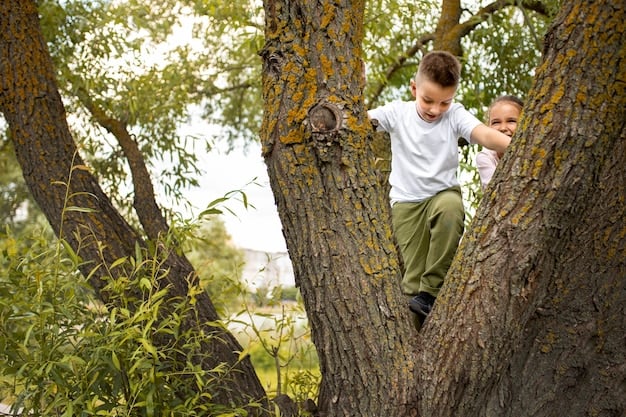🌍Little Explorers: Bringing Nature Into the Early Learning Classroom
🌍Little Explorers: Bringing Nature Into the Early Learning Classroom
From rustling leaves to squishy soil, nature is filled with sights, sounds, and textures that spark wonder in young children. In fact, some of the most powerful learning doesn’t happen within four walls — it happens in the great #outdoors. Whether it's through nature walks, gardening, or #outdoor- #play, #early #educators have an incredible opportunity to harness the natural world as a living #classroom.
Let’s explore how outdoor experiences benefit #toddlers and #preschoolers — and how you can start creating your own little explorers today!
🌱 Why Nature-Based Learning Matters
Outdoor learning is more than fresh air and fun (though it includes plenty of both!). Engaging with nature #nurtures the whole child — physically, cognitively, socially, and emotionally.
Children who spend time outdoors:
-
Develop stronger motor skills through climbing, digging, and balancing
-
Build sensory awareness through hands-on exploration
-
Learn to observe, ask questions, and make connections — laying the foundation for scientific thinking
-
Experience reduced #stress levels and improved focus
By incorporating natural elements into your teaching, you're offering experiences that boost both brainpower and well-being.
🎓 Ready to design your own outdoor learning environment? Check out our course:
👉 Creating the Natural Outdoor Classroom
This course is packed with inspiration and guidance for transforming outdoor areas into rich, #developmentally appropriate learning spaces.
🚶 Nature Walks: The World Is Your Classroom
Taking toddlers and preschoolers on short, supervised nature walks around your center or neighborhood offers endless educational opportunities.
Encourage children to:
-
Notice colors, patterns, and textures
-
Listen to birds, leaves, and the wind
-
Count how many rocks, bugs, or flowers they see
-
Ask questions like “Why is the sky blue?” or “What do worms eat?”
These simple experiences sharpen observation and #language-skills while helping children feel connected to the world around them.
For a fun, structured twist on nature walks, try this engaging activity:
👉 Scavenger Hunt in the Classroom
Although designed for indoor use, this adaptable resource can easily be taken outdoors to guide exploration and discovery.
🌻 Gardening with Little Hands
You don’t need a big yard or fancy tools to enjoy the magic of gardening. A few containers and seeds are all it takes to create a mini garden that introduces children to:
-
Plant life cycles
-
Responsibility (watering and caring for plants)
-
Healthy eating habits
-
Patience and observation
Planting flowers, herbs, or vegetables gives children a hands-on way to watch life grow — a lesson in science and wonder rolled into one.
🌈 Turning Everyday Moments Into Learning Opportunities
Whether it's watching clouds drift by or digging for worms in the dirt, every outdoor moment holds potential for learning. Encourage child-led exploration, provide open-ended materials (like sticks, rocks, and leaves), and let curiosity #lead the way.
You don’t have to plan elaborate outdoor lessons — just create opportunities and step back. Nature does the teaching!
🌼 Final Thoughts: Big Learning in the Great Outdoors
When children connect with nature, they’re not just playing — they’re building lifelong skills and relationships with the world around them. As early educators, we have the chance to nurture a sense of wonder and stewardship that will stick with them for years to come.
So grab your walking shoes, gather some curious minds, and step into the world outside. Your classroom just got a whole lot bigger!
- Creating the Natural Outdoor Classroom
- Building Equity: Inclusionary Practices in Preschool
- Supporting Little Hearts: Divorce and Separation in the Child Care Setting
- Classroom Setup for Child Care
- Engaging Parents in the Montessori Toddler Classroom
- Supporting Little Hearts: Divorce and Separation in the Child Care Setting
- Early Childhood Education
- Mysteries of Challenging Behavior Solved
- Montessori Foundations
- Effective and Engaging Classroom and Home Daycare Room Arrangements
- Maximizing Summer Joy and Learning: The Role of Child Supervision in Dallas Metro Area
- Exploring the World: Fun and Educational Social Studies Activities for Preschoolers
- Fun in the Preschool Classroom
- Outdoor Spring Play: 10 Engaging Activities to Stimulate Young Minds
- ☀️ Summer Smiles: Creative and Fun Activities for Preschoolers 🎨🌻
- 🌍Little Explorers: Bringing Nature Into the Early Learning Classroom
- 🌟Little Hands, Big Learning: Why Play is the Secret Ingredient to Early Childhood Growth
- Planning with Purpose: The Art of Creating Inclusive ECE Classrooms 🎨
- ❄️ What Outdoor Activities Work Well for Illinois Kids in Every Season? 🌷🍂
- Field Trip Ideas in Florida: Fun, Educational Adventures for Children
